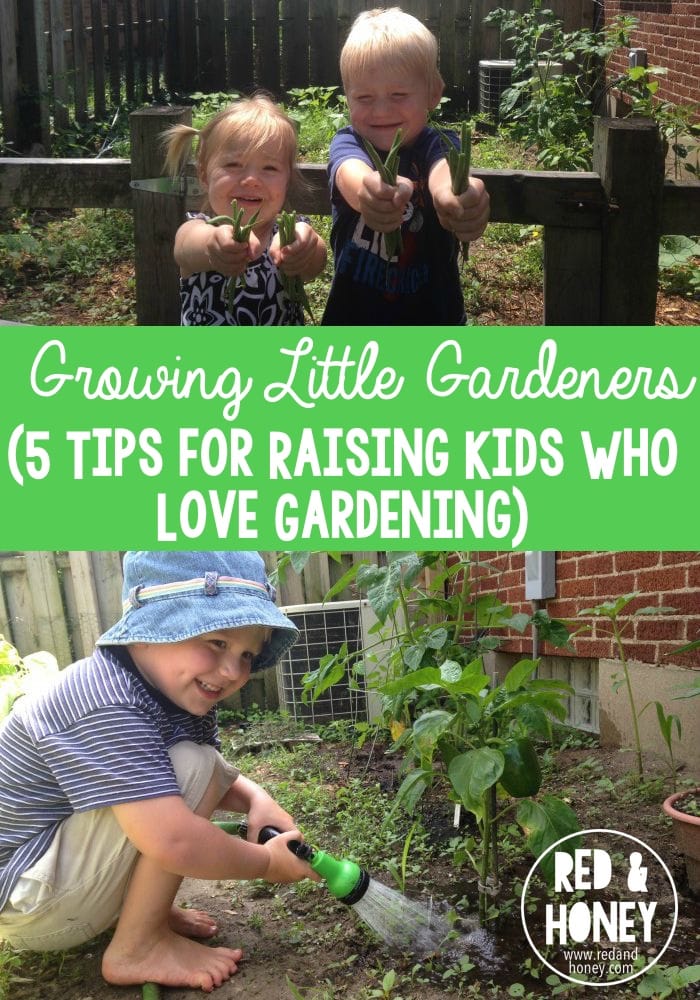
Guest post by Faith Watson
As I helped my four-year-old water our garden, I couldn’t help but ponder how my kids have developed a love for gardening and that it was kind of an accidental journey on my part.
I love the feeling of the cool earth between my toes and getting my hands dirty in the soil as I work in a garden. I love planning, researching, and organizing what my garden will look like. I love watching it sprout and grow. I love enjoying the fresh-picked fruits of my labor.
I haven’t been able to have a garden each summer but I always have big dreams of a beautiful, bountiful garden.
This spring I knew my detailed and precise garden plan was going to need some flexibility to allow two little helpers to be right there with me, dirt-flinging and hose-spraying included, because over the past couple years, my own love for gardening was passed on and instilled into my kiddos.
Of course, I do want them to develop a love for being outdoors and growing our own food. I say “accidental” only because I didn’t have a specific plan in place to make this happen but it happened naturally in the course of togetherness, which really is the key to sharing and learning…doing things together.
Here are five “togethers” I did with my kids that helped them grow to love gardening:
1. Read Together
Reading opens new worlds and expands the mind to imagine and imitate. There are so many books about gardens and growing things, but these three became favorites in our house. Throughout winter and spring, these stories (and words like “turnip” and “daffodil”) became part of everyday conversation as their little growing minds expanded with new information about our world.



2. Shop Together
Everyday life provides the best opportunities for learning, even something as simple and normal as grocery shopping. The kids are usually with me when I get groceries.
When I’m being intentional about educational opportunities (and not in a big rush), I enjoy strolling the produce aisles and together identifying fruits and veggies that we’ve read in our books, and even selecting new ones to try.
They love helping me use the scales to weigh items, thumping watermelons to select the perfect one, or simply pointing out all the colors and shapes.
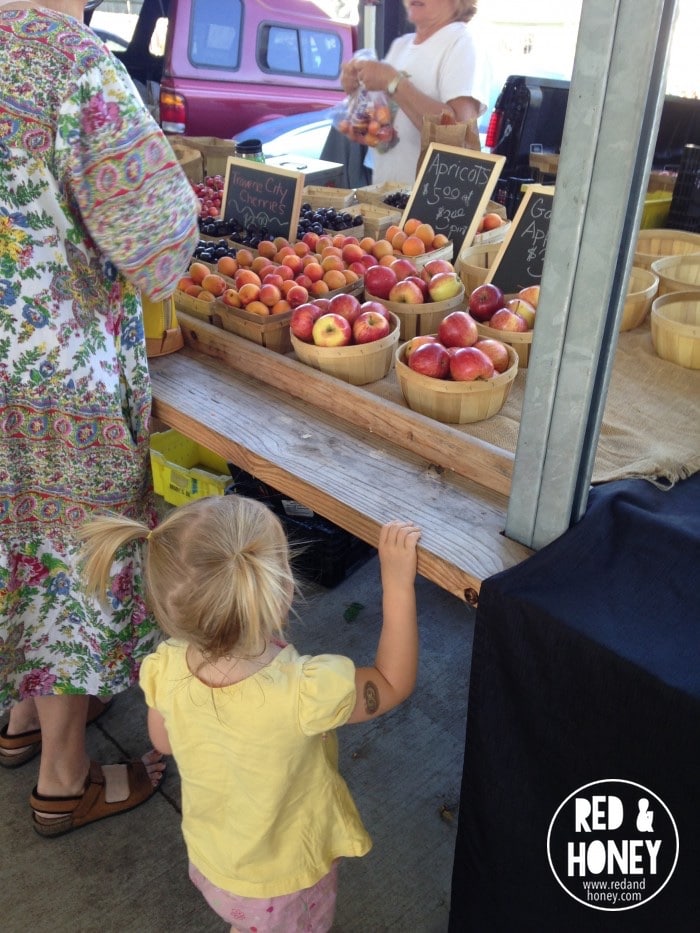
The Farmer’s Market is another fun experience to see all sorts of produce available locally and seasonally. I bring my reusable bags and let them each help carry the food they’ve helped choose.
As they watch and listen to me interact with the venders, they learn (as I do) about what goes into growing good produce, what I and others value when it comes to fresh fruit and vegetables, how to carry out a transaction, along with a host of other lessons about life and caring for this world.
3. Learn Together
We’re city-dwellers. We live in Michigan (read: an overwhelming abundance of cloudy, cold days, especially in winter). We spend a lot of time inside.
I’d love to say I don’t resort to technology to entertain my kids, but seriously, have you lived through a Michigan winter?
That said, I do at least make an intentional effort to ensure the majority of TV and technology my kids experience is educational. We have some favorite shows that have taught my kids a ton of really awesome stuff.
When I hear my two year old singing songs about photosynthesis or the different parts of a plant’s life cycle, I don’t feel so bad about letting them watch more TV than they should in a day (especially if it was a bitterly cold day in January!)
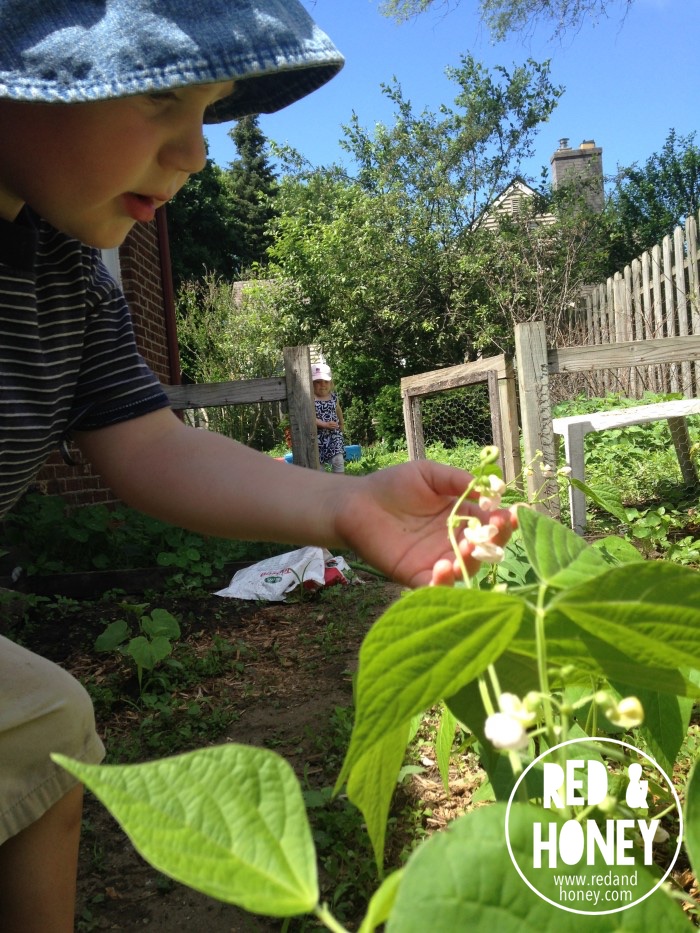
Rachel and the Treeschoolers is a Kickstarter-funded project with 9 episodes created from a preschool educational curriculum, incorporating multiple levels of learning. The “Plants and Flowers” episode has a song all about the life cycle of a plant. (Rachel and the Treeschoolers was created by the same creators of the Signing Time series, which we also love.)
Signing Time is another family favorite that has taught us so much about communication in general and American Sign Language specifically. Having the extra resource of a few basic signs helped especially in the very early years before my kids could speak, but we still use signs and love learning new signs. One of our favorite Signing Time episodes Time To Eat is all about food and learning ASL signs for different foods. We love “The Garden Song.”
We love Daniel Tiger’s Neighborhood, and I’ve been amazed at the emotional as well as educational learning my kids have gained through this program. A couple of our favorite episodes have to do with gardens, fruits and vegetables, and trying new food: A Trip to the Enchanted Garden (Season 1, Episode 9) and Be A Vegetable Taster (Season 2, Episode 6).
Just for fun, I’m also including an app in these learning together tools. My kids love the Yummiloo game, and they’ve learned about produce, gardening, as well as composting through this iPhone game I downloaded on a whim when I saw someone else recommend it.
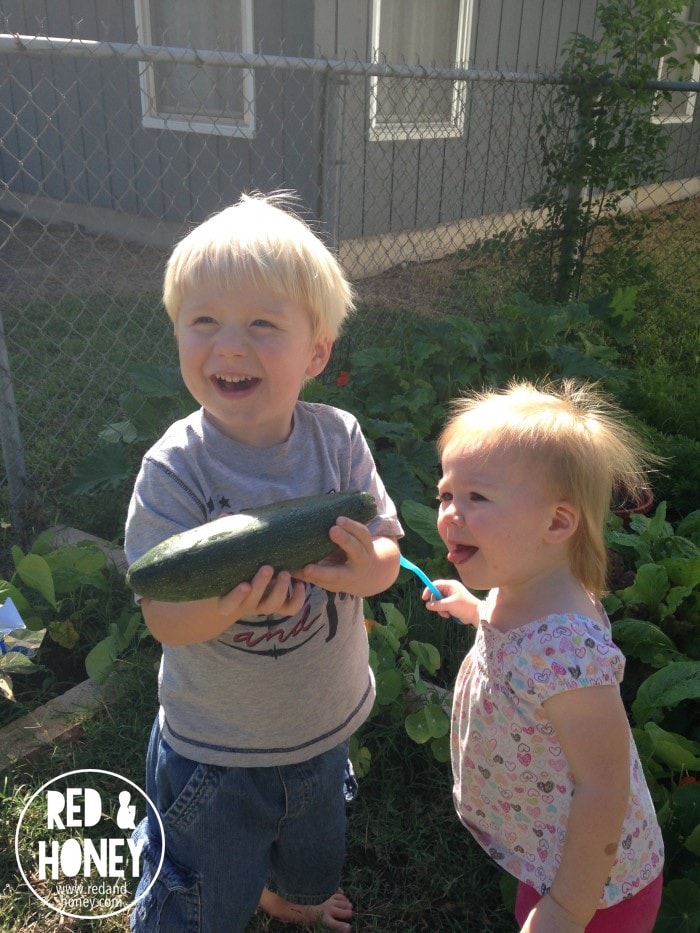
4. Plan Together
Winter seems to last forever in Michigan, and even after the snow melts, the ground and air temperatures are still too cold to start planting until late May (unless you start seeds early indoors in containers…maybe next year).
Basically, there’s plenty of time for planning and talking about what we should plant. Someday, we’ll save our own seeds or go to an organic seed exchange group, but this year, we just went to our grocery store and picked out some seed packets.
Planning the garden also involves dreaming and speaking longingly of spring, which in Michigan, is HIGHLY anticipated and celebrated when winter’s icy cold grip finally melts away!
I don’t remember how many times on a sunny, warmer day I would look out the windows and cheer for the snow to melt faster and for spring to arrive. I chuckled when I heard little voices days later spontaneously yelling out, “Melt, snow, melt! Yay, spring!” They pick up on everything!
5. Work Together
Gardens are a lot of work. Why not train some little helpers?
When the time finally came for planting, my kids helped prep the soil. Together, we planted seeds, watered and waited to see those first little sprouts (and worried when there was a frost advisory).
Then there’s weeding and tending the new plants, worrying together during windy thunderstorms, and finally sharing in the joy of picking our own produce! Part of working together involves giving them ownership and letting them help even when it slows me down or isn’t as convenient.
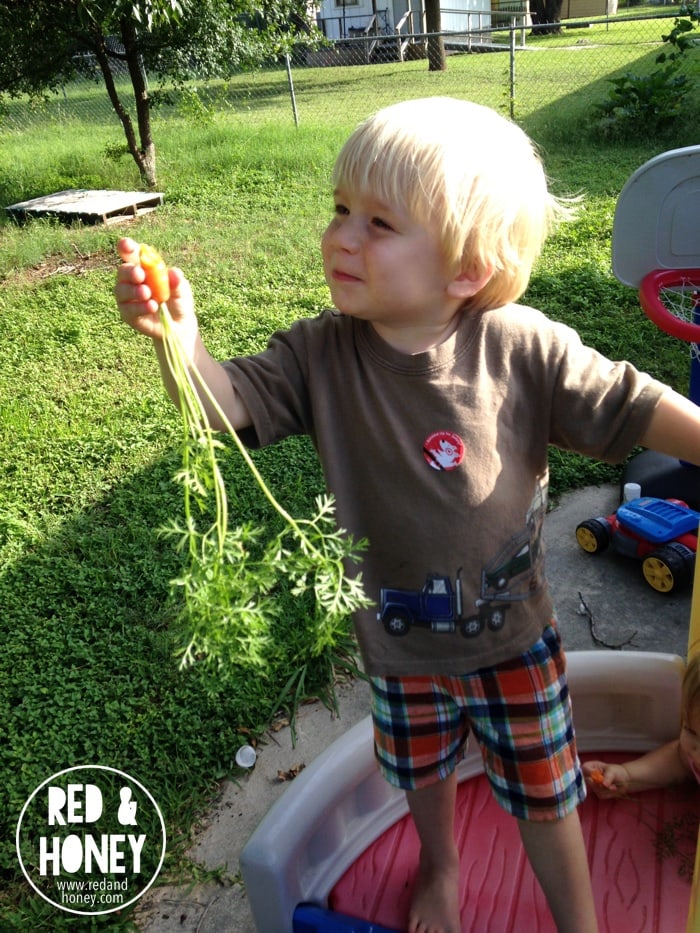
I chose to consciously adjust my language from “my” garden to “our” garden to share in that ownership and pride, because it isn’t just mine anymore.
My ultimate dream is to own a homestead with chickens and goats and a massive garden where much of our food is being produced by us. My reality is living in the city with a small overgrown garden plot and a convenient grocery store a mile away.
When I compare my dream and reality, I realize that, more than likely, if I were suddenly transported to my ultimate dream homestead, I’d probably end up a miserable failure.
I like the idea of a homestead, but the hard work of sustaining that kind of lifestyle actually freaks me out…because that’s not where I am in life right now. Just as growing a garden takes time and hard work, so does turning a dream into a reality.
Even more than that, growing little gardeners is a slow and steady process of togetherness.
Bonus Tip! Make a Fairy Garden 🙂
To encourage the magical love of all things gardens in little ones, why not try building a DIY fairy garden? Check out these 23 Unique Outdoor Fairy Garden Container Ideas from the Fairy Garden DIY blog. There are so many adorable ideas!
These precious children I’ve been blessed to call mine are like little gardens themselves. I’m learning that what matters most is just living faithfully and well right where I am, taking steps in the direction I want to go and helping train these little people to live and love well also.
Our watermelon plants finally have flowers on them. I see the first of the cucumbers almost ripe, and I can’t wait to make them into some probiotic pickles, which my daughter loves! The tomato plants are almost as tall as I am and starting to grow heavy with the ripening fruit. The carrots are probably ridiculously small like last year, because I failed to thin them out again.
But our garden’s success isn’t in what grows or not, but it’s found in the joy on the faces of my sweet children as they pick and eat fresh veggies that they helped plant and grow, straight from our own garden.
Related Posts You May Enjoy:
- What is a Milpa, and Why Should You Plant One in Your Garden This Year?
- A Day in the Life of a Homesteading Mama?
- 7 Reasons to Hang Dry Laundry All Year Round
What tips do you have for growing little gardeners?

Faith Watson’s dreams have always been to pursue adventure and make a difference. Her “list” as a 20-something included traveling, writing, and dreaming of the future. While her adventures abroad were thrilling as a single adult, she has come to value and pursue a new kind of adventure: motherhood! With two busy preschoolers and a husband in the military, Faith’s life as a 30-something continues to be quite adventurous! Her new “list” involves fermenting foods, exploring natural remedies for health, and making a difference in the lives of two adorable little people who know how to press all of Mommy’s buttons (while also trying to stay sane)!




















Maria
Gardening is a great activity and it’s a real pleasure to enjoy the end product. It is nice to see your garden grow over the years and to see the result of all your creativity and hard work
Kariane
I agree. I think working with your kids in the garden is one of the best ways to teach them a little bit about where food comes from, and the importance of healthy soils. I don’t think it needs to be anything complex or formal for them to learn, and it can be fun time spent together for everyone. I wrote a bit about gardening with my kids here: http://everydaymindfulliving.com/working-in-the-garden-planting-irises/